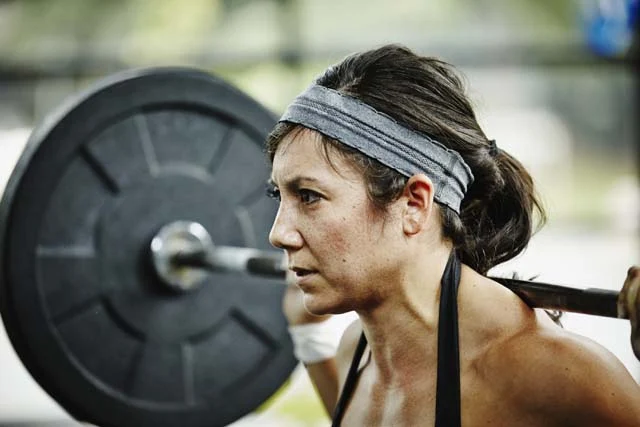
Metabolism: what comes to mind when you hear that word? Frustration?
Anxiety? Dead End? What if I told you to think about your metabolism in a
new way. What if we removed all the emotional connection to the word
and just looked at metabolism for what it is: science.
Metabolism
is a chemical process, just like photosynthesis or digestion. If we
start the conversation with that fact, it might be easier to understand
and accept that you can do something about your “slow” metabolism.
By understanding how muscle plays a role, you can learn how to boost your metabolism and make a change for the better.
Simply stated, metabolism
is a chemical process that converts the food you eat into energy that
you burn during the day. And what do you burn? Calories, of course. A
calorie is a unit of energy.
So it would stand to reason that if you burn more
calories than you consume, you would lose weight. Now while this is
essentially true, it's more complicated that that.
You see, it’s
not just about the movement you make those burn calories. In addition to
the calories you burn when you run, bike, and swim, we are all set with
something called our “resting metabolic rate." This is the calorie burn
that happens when we sit at our desks and work, watch television from
the sofa, or even when sleep. Even when you're at rest, your body
needs energy for all its "hidden" functions, such as breathing,
circulating blood, adjusting hormone levels, and growing and repairing
cells. According to the Mayo Clinic, there are several things that can affect your metabolism:
- Your body size and composition. If you weigh more or have more muscle mass, you will burn more calories, even at rest. So people who weigh more are more likely to have a faster metabolic rate—not a slower one—because a portion of excess weight is muscle tissue.
- Your sex. If you're a man, you probably have less body fat and more muscle mass than a woman of the same age, so you burn more calories.
- Your age. As you get older, your muscle mass decreases, which slows down the rate at which you burn calories.
Do
you sense a theme? The more muscle you have, the more calories your
body burns all day long. Muscle burns three to five times more calories
than fat does. So the more muscle you have, the more calories you’ll
burn—even when you’re staying perfectly still.
Unfortunately, after age 35, you start to lose about a half pound of muscle per year if you're not actively replacing it. The good news is there IS something you can do about it: strength training!
Strength Training 101: Where Do You Begin?
Adding
muscle to your body will, undeniably, help rev your metabolism and keep
you fit. In addition, however, the Center for Disease Control (“CDC”)
lists the other numerous benefits seen in people who strength train regularly such as reducing the symptoms of:
- arthritis
- diabetes
- osteoporosis
- obesity
- back pain
- depression
So
now that you know the importance of strength training, the question is:
where do you start? Do you have to go to a big gym and walk around by
grunting men holding giant barbells and looking into the mirror as their
veins pop? You’ll be happy to hear the answer is a definite NO! Lifting
weights is only one of the many ways you can strength train; let's take
a look at a few others.
DUMBBELLS OR BARBELLS.
The most commonly used piece of strength equipment, dumbbells or
barbells come in all sizes from very light to very heavy! This makes
them appropriate for all levels. Simply go lighter as you see fit. If
you choose this route, it would be smart to hire a trainer (even for
just one session) to show you the proper form and get you started. If that’s
not an option, there are great online workouts for you to find that can teach you what you need to know.
BODYWEIGHT ALONE WORKS! If you are new to strength training, bodyweight is the way to go. Using your own body weight for push-ups, lunges, squats or pull-ups can be the most palatable, yet the most difficult workout you will ever try!
MACHINES. Strength
machines at the gym or in circuit-style clubs can be more user-friendly
than dumbbells if you are new to strength training. Most machines have
instructions and photos right on the front, making it easy to understand
what you should do. Machines are also a bit safer given their fixed nature.
STRENGTH CLASS. If
you belong to a health club, try a class that involves strength
training. Getting instruction from a professional teacher is a great way
to learn several different moves for a variety of body parts. In
addition, the group setting can be really fun!
DVD or ONLINE WORKOUTS. The
latest and greatest way to get your workout in is in the comfort of
your own home! Pop in a DVD or turn on your computer and follow along as
a teacher literally walks you through the routine providing not only
instruction but some friendly company and motivation to boot! There are
online workout streaming services that allow you to work out with your favorite fitness professional from anywhere at any time.
With
all of those options, a great workout is just a step away! Take that
step today and start revving your metabolism back up now.
By Chris Freytag
Weight Training Expert
























